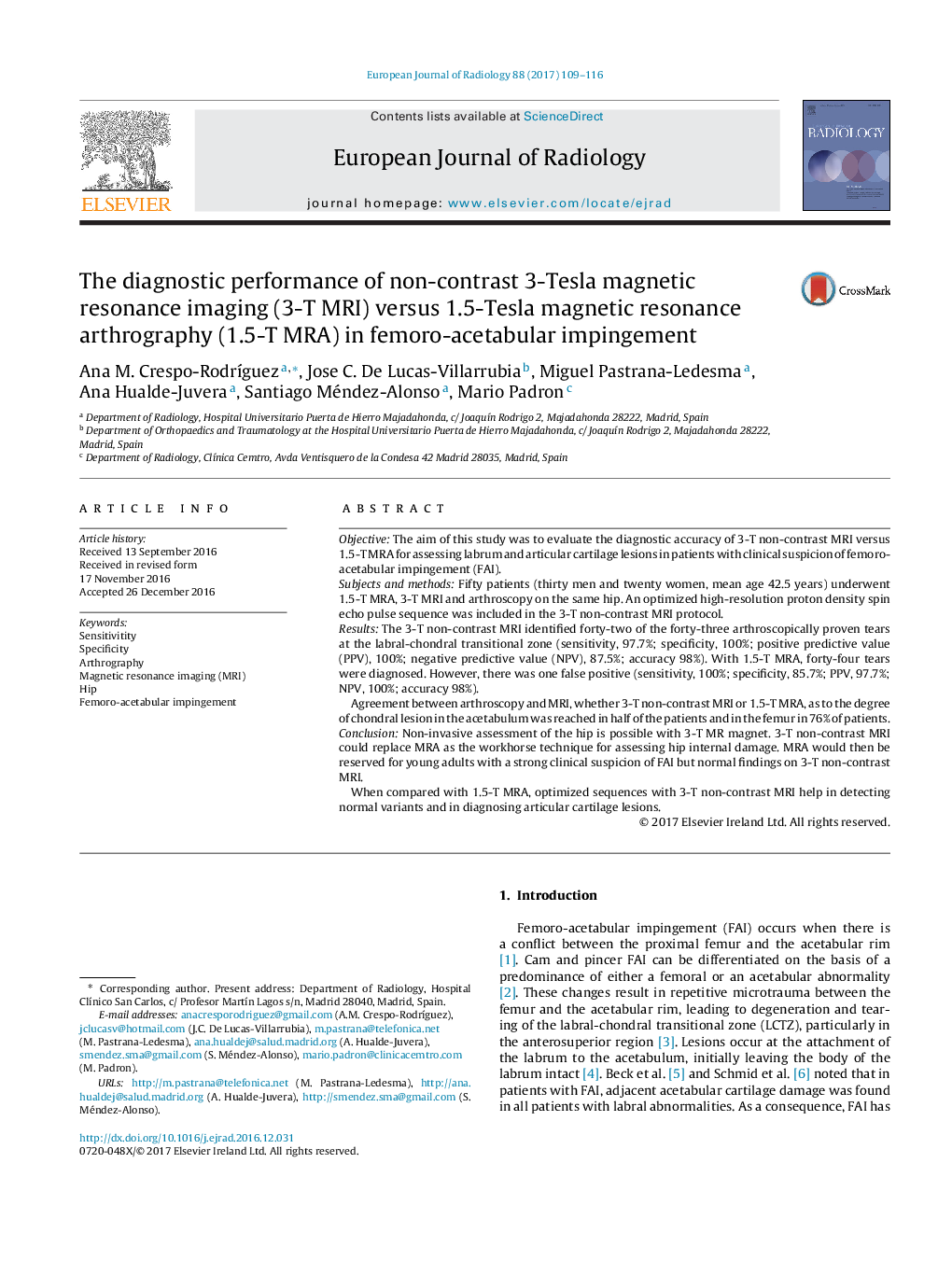| کد مقاله | کد نشریه | سال انتشار | مقاله انگلیسی | نسخه تمام متن |
|---|---|---|---|---|
| 5726231 | 1609732 | 2017 | 8 صفحه PDF | دانلود رایگان |

- High resolution sequences at 3-T MRI extend accuracy in hip assessment without any need for intra-articular injection of contrast media.
- As compared to 1.5-T MRA, 3-T non-contrast MRI of the hip improves the patient experience and avoids the potential risks of an invasive procedure and contrast media.
- Avoiding the need for arthrographic procedures in the Radiology Department improves patient throughput and reduces costs.
ObjectiveThe aim of this study was to evaluate the diagnostic accuracy of 3-T non-contrast MRI versus 1.5-T MRA for assessing labrum and articular cartilage lesions in patients with clinical suspicion of femoro-acetabular impingement (FAI).Subjects and methodsFifty patients (thirty men and twenty women, mean age 42.5 years) underwent 1.5-T MRA, 3-T MRI and arthroscopy on the same hip. An optimized high-resolution proton density spin echo pulse sequence was included in the 3-T non-contrast MRI protocol.ResultsThe 3-T non-contrast MRI identified forty-two of the forty-three arthroscopically proven tears at the labral-chondral transitional zone (sensitivity, 97.7%; specificity, 100%; positive predictive value (PPV), 100%; negative predictive value (NPV), 87.5%; accuracy 98%). With 1.5-T MRA, forty-four tears were diagnosed. However, there was one false positive (sensitivity, 100%; specificity, 85.7%; PPV, 97.7%; NPV, 100%; accuracy 98%).Agreement between arthroscopy and MRI, whether 3-T non-contrast MRI or 1.5-T MRA, as to the degree of chondral lesion in the acetabulum was reached in half of the patients and in the femur in 76% of patients.ConclusionNon-invasive assessment of the hip is possible with 3-T MR magnet. 3-T non-contrast MRI could replace MRA as the workhorse technique for assessing hip internal damage. MRA would then be reserved for young adults with a strong clinical suspicion of FAI but normal findings on 3-T non-contrast MRI.When compared with 1.5-T MRA, optimized sequences with 3-T non-contrast MRI help in detecting normal variants and in diagnosing articular cartilage lesions.
Journal: European Journal of Radiology - Volume 88, March 2017, Pages 109-116